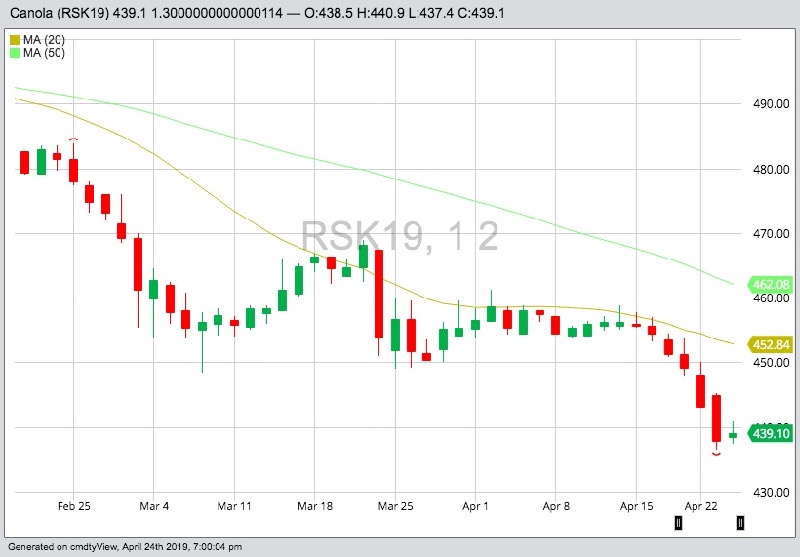MarketsFarm –– Statistics Canada’s acreage report has provided something of a much-needed bounce for canola bids.
Canola hit a record low Tuesday, with the May contract at $437.80 per tonne and the July contract at $446.10 per tonne.
The primary reason for the huge drop was the price of soybeans on the Chicago Board of Trade, said Errol Anderson of ProMarket Communications in Calgary.
“Soybean fell apart. For the July contract there was support at US$9 per bushel, and when that broke, it went heave-ho. We went all of the way down to our next level of support,” Anderson said, noting soybeans lost 30 cents per bushel in a week.
Read Also

USDA cuts US corn stocks outlook after raising exports to record high
The U.S. Department of Agriculture lowered its U.S. corn supply forecast in a monthly supply-and-demand report on Friday and raised its outlook for U.S. exports of the grain this season to a record high following a strong pace of overseas shipments.
The principal field crop area report released Wednesday by Statistics Canada breathed some life into canola bids. The expectation of fewer canola acres being planted had a slight bullish effect on bids, Anderson said.
Bids on the Intercontinental Exchange (ICE) gained $1.30 to $1.80 per tonne on Wednesday.
Statistics Canada projected 21.3 million acres to be seeded to canola in 2019, down from the 21.8 million seeded in 2018 and 345,000 acres below the five-year average. Market estimates had ranged from 19.4 million to 22.5 million.
As much as the report provided some relief, Anderson isn’t optimistic as soybean prices won’t benefit that much from a trade deal between the U.S. and China.
“If there’s any sort of an agreement, it will be small potatoes. There’s no grand deal coming. The market has to come to that realization.”
While China will buy some products from the U.S. and soybeans should get a little bit of a bounce, the expected boom won’t materialize, he added — and that would mean the anticipated spillover into canola won’t happen as well.
And there is Canada’s own issue with China, which accounts for 40 per cent of canola exports. China has continued to honour previously signed contracts for canola, but there have not been any new sales this year.
— Glen Hallick writes for MarketsFarm, a Glacier FarmMedia division specializing in grain and commodity market reporting.




















